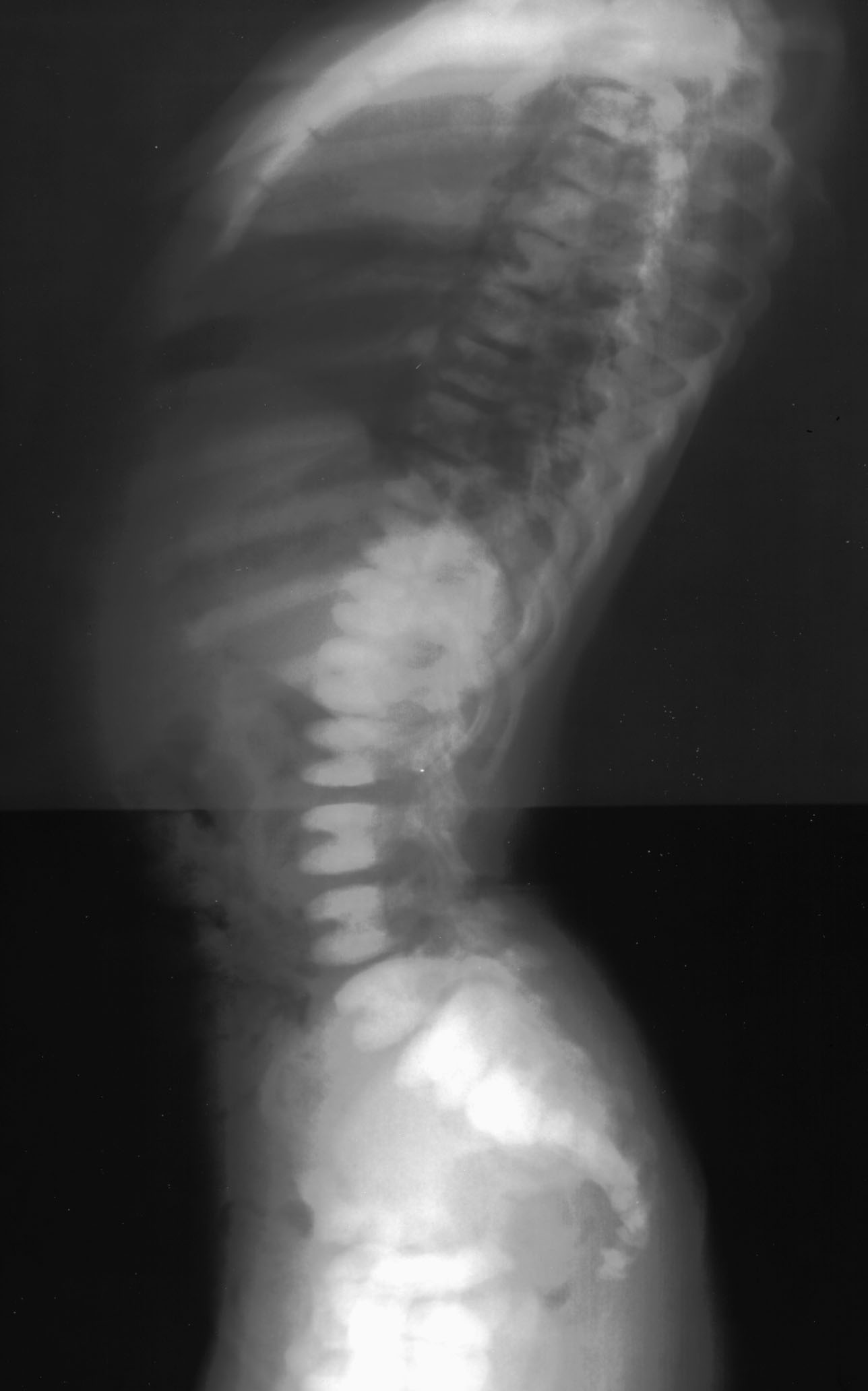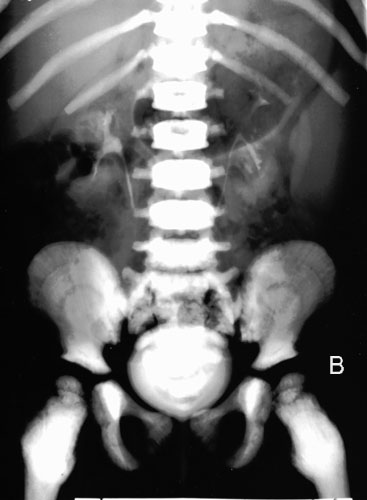Pediatric Radiology > Musculoskeletal > Constitutional Disorders of Bone > Osteopetrosis
Osteopetrosis
![]()
|
Osteopetrosis is a rare inherited disorder of defective osteoclastic activity. The osteoclasts are ineffective at resorbing and remodeling bone. That is, as more bone is laid down, the calcified cartilage begins to encroach upon the marrow cavity and dense bony sclerosis develops. As a result of reduced marrow space, these patients often suffer from pancytopenia and develop hepatosplenomegaly and lymphadenopathy. The autosomal recessive form of the disorder is usually lethal whereas the autosomal dominant form is more compatible with life. Despite their increased density, the bones are abnormally brittle and pathologic fractures are common in osteopetrosis. All bones may be affected. Thick lines of increased density are first seen in the metaphysis, which eventually extend throughout the bony shaft. It is thought that the disease process ceases from time to time during development, resulting in the classic "bone-within-bone" appearance. Radiographic findings:
|
|
 |
Osteopetrosis in a 7-year-old female who presented with scoliosis. Lateral radiograph of the spine reveals diffuse bony sclerosis involving the entire spine. The vertebral bodies show an asymmetry in the amount of increased bony density with the upper and lower end plates appearing more dense (like a sandwich). |
 |
 |
Osteopetrosis in a 22-month-old male. A, Radiograph of the right upper extremity demonstrates diffuse intense sclerosis of the long bones with obliteration of the marrow cavity. Note the short, block-like nature of these bones and the widened metaphyses (Erlenmeyer flask deformity). B, AP radiograph of the pelvis again shows diffuse sclerosis throughout the spine, pelvis, and femurs. There is a characteristic "bone-within-bone" appearance, seen best in the iliac crest. |